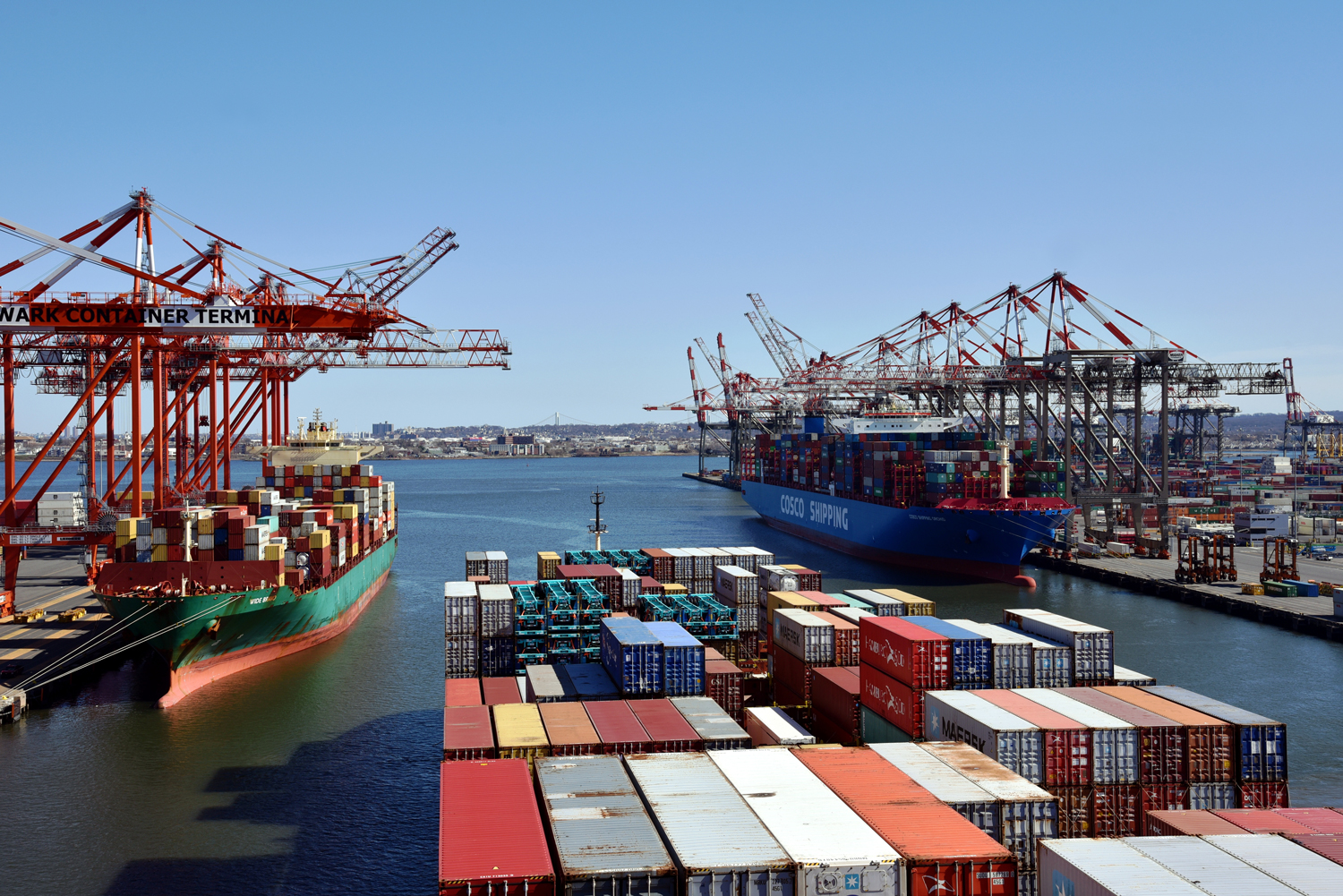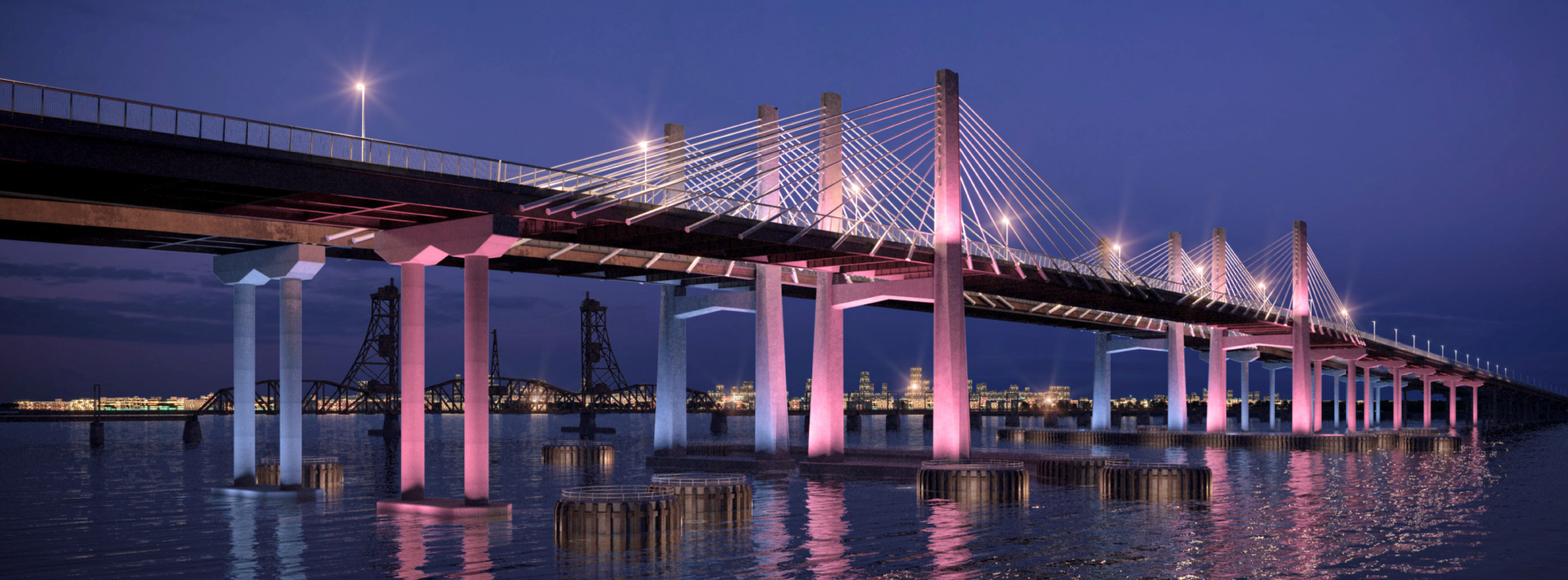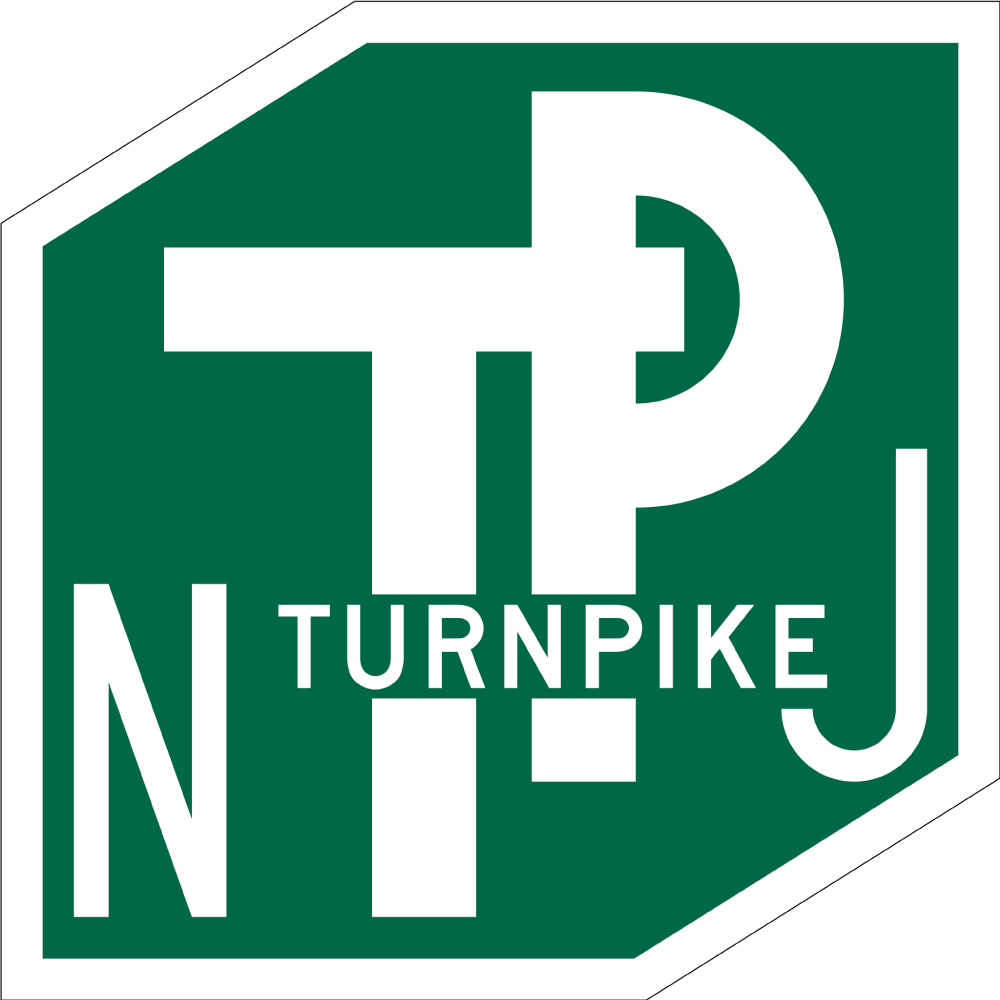
At the New Jersey Turnpike Authority, safety and relieving traffic congestion and its negative impacts on drivers, communities, and the environment are top priorities, which is why we’re undertaking this critical modernization and safety program to rebuild the Newark Bay-Hudson County Extension. Opened to traffic in 1956, the Turnpike Extension is 8.1 miles of critical transportation infrastructure from Interchange 14 in Newark to the Jersey Avenue intersection in Jersey City. It is an official State of New Jersey evacuation route. The Turnpike Extension consists primarily of 29 bridges that are at the end of their life. Replacing them is a necessity.

A future-forward modernization and safety program
Preparing for the Future
The communities adjacent to the Turnpike Extension are growing and the ports are thriving.
In Hudson County, it is projected that over the next decade, there will be an additional 80,000 residential units, 15 million square feet of office space, and nearly 4 million square feet of retail. Much of this development will occur in Jersey City and Bayonne due to their economic development success in tandem with the tremendous growth of the port facilities, which employ thousands of residents and are crucial to the State’s economy.

Prioritizing Environmental Justice
The neighborhoods closest to the Turnpike Extension will be negatively impacted if repairs are not made.
Many neighborhoods closest to the Turnpike Extension are working-class communities of color, which is why environmental justice has been a key part of the planning and design process since the beginning. The rebuilding of the Turnpike Extension will be based on the most current environmental process and include stormwater basins to help reduce local flooding.




The Reconstruction Between Interchanges 14 and 14A
The Highest Priority Project
The reconstruction between Interchange 14 in Newark and Interchange 14A in Bayonne and Jersey City is the highest priority project due to the age and condition of the bridges. It consists of multiple ramps and 16 bridges, including the Vincent Robert Casciano Bridge, known as the Newark Bay Bridge. This project will replace all 16 bridges with the Newark Bay Bridge being replaced with two new twin bridges depicted below. These new Newark Bay Bridges will serve as an iconic gateway to Bayonne, Jersey City, and Newark communities and relieve traffic congestion resulting from the record growth of the port facility in Bayonne.


Setting the
Record Straight

The existing bridges can simply be rehabilitated or repaired.
The existing bridges cannot be rehabbed. There are significant issues below the surface of the structures and they cannot handle the weight of the trucks headed to the ports.
Taxpayer dollars are being used to fund the Program.
No City, County, State, or Federal tax dollars will be utilized to fund this important Program.
The Program is being funded through toll revenue.
Most of the traffic on the Turnpike Extension is headed into New York.
Traffic heading into the Holland Tunnel is not the cause of projected increases in traffic along the Turnpike Extension corridor.
Independent origin-destination data show nearly 80% of eastbound Turnpike Extension traffic is bound for Jersey City (56%), Bayonne (17%), and other parts of Hudson County (6%).
The Turnpike Extension is being widened up to the Holland Tunnel.
Columbus Drive to Jersey Avenue in Jersey City, which is the second priority, will NOT include new travel lanes.
This project is proposed to replace the existing two lanes as well as add standard shoulders in each direction for safety and maintenance.
This Program will create environmental justice issues.
Environmental justice is a key focus of the Program planning and design process.
A draft Executive Order 215 Environmental Impact Statement (EIS) was completed and a NEPA Environmental Assessment (EA) is underway. Environmental justice is a primary focus of both. The findings of the draft EIS are favorable. Scroll down to the footer to review the draft EIS.
This Program is taking money away from public transit.
The New Jersey Turnpike Authority is also investing in the expansion of public transit.
On average, the Turnpike Authority contributes approximately half a billion dollars a year from its toll revenue—a historic level of funding—to the State of New Jersey for public transit.
